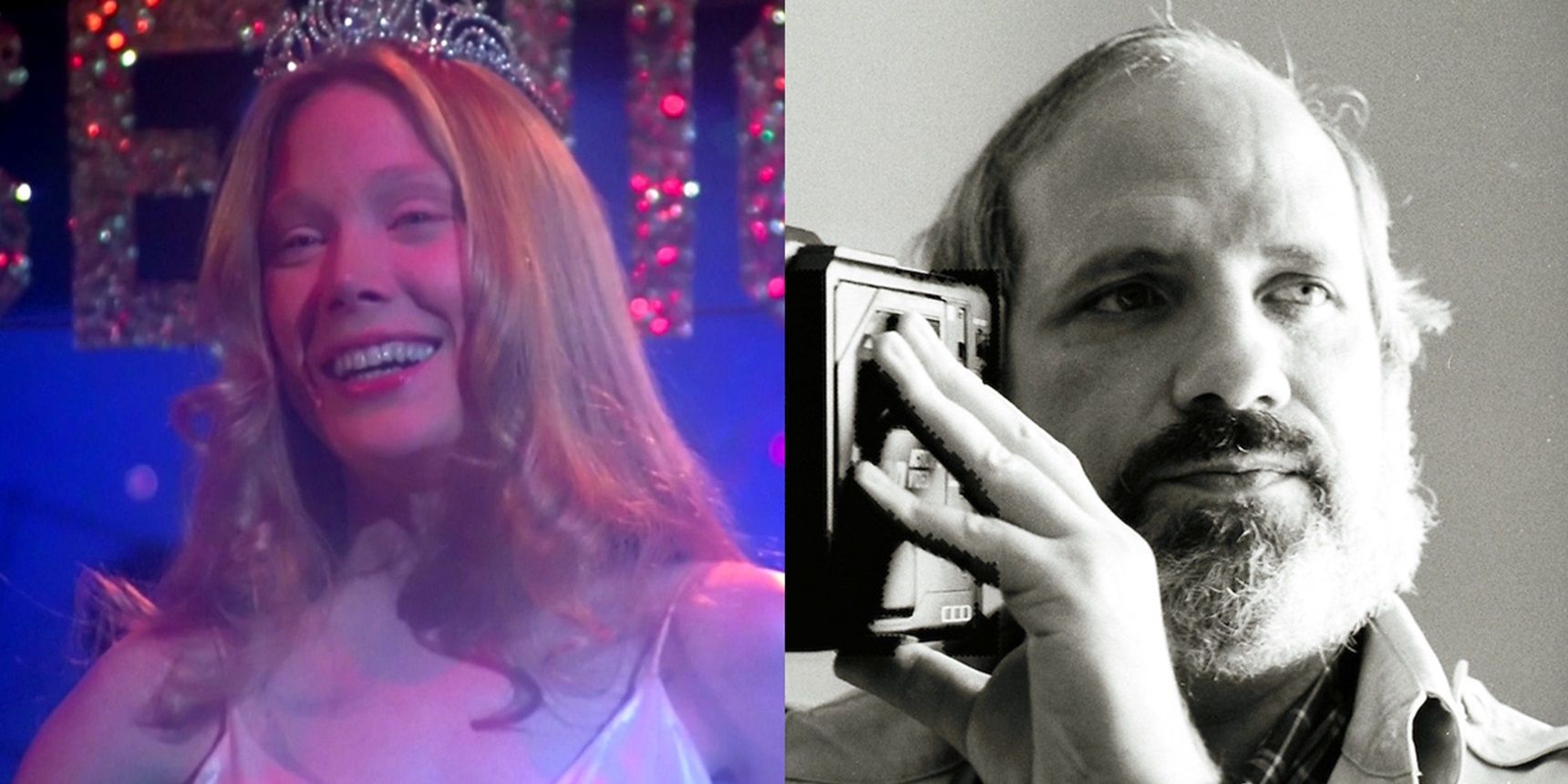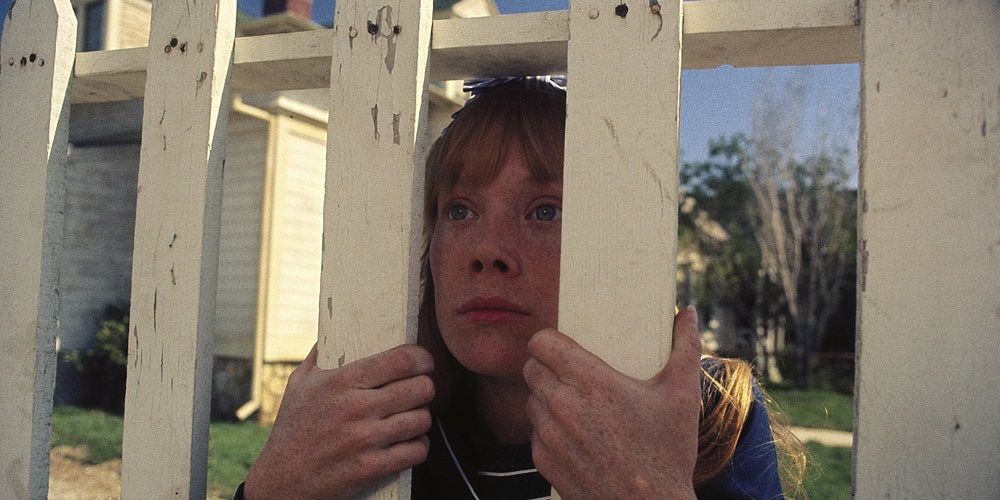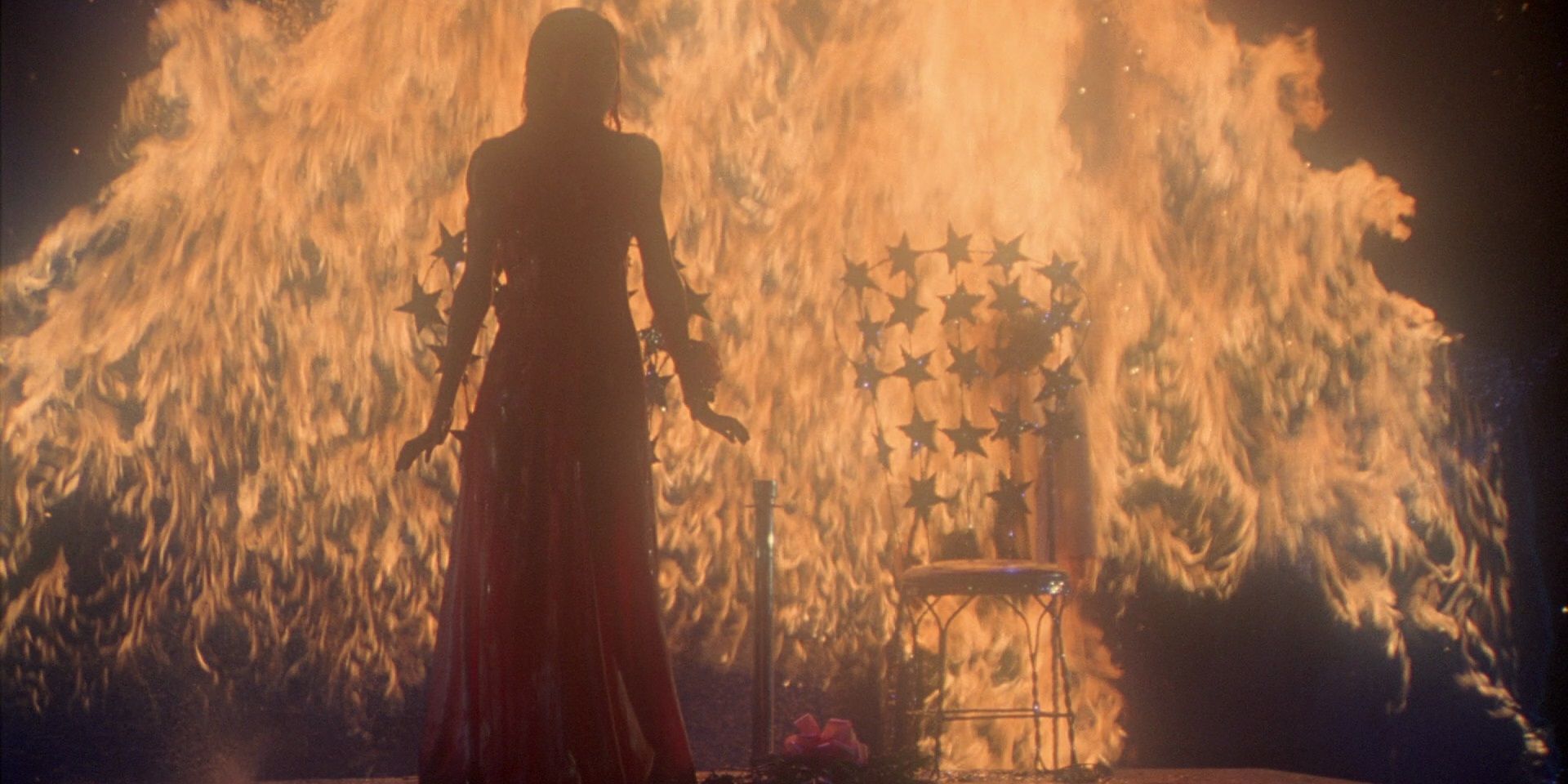Carrie was the first novel that Stephen King published and, as a result, the first one that got adapted for the screen. King’s debut novel set a high bar for his literary career and Brian De Palma’s iconic film version set a high bar for adaptations of his work. Released two years after the book was published, De Palma’s Carrie has a well-deserved reputation as one of the greatest horror movies ever made. De Palma’s pulpy, visceral, tongue-in-cheek horror aesthetic was paired perfectly with King’s own pulpy, visceral, tongue-in-cheek writing style to produce a true masterpiece.
At a glance, Carrie doesn’t seem tailored to a film adaptation. King tells most of the story through letters, newspaper clippings, and magazine articles, which aren’t easily translated to a visual medium. But De Palma has a keen eye for the images that will affect his audience the most. He pinpointed the most cinematic scenes from the novel – from Carrie’s first period striking during a communal shower at school to the gallons of pigs’ blood that get dumped on her head during the prom prank that pushes her over the edge – and constructed his movie around those powerful moments.
Both De Palma and King imbue their haunting horror stories with a sly, winking self-awareness. De Palma has homaged horror classics in such movies as his psychological conjoined twins thriller Sisters and his spooky meta rock opera Phantom of the Paradise, and King retroactively combined most of his bibliography into a sprawling, interconnected multiverse. These storytellers both draw on the deep well of horror history and recontextualize all the genre’s greatest hits with a bizarre new twist. Whereas De Palma styled himself as a modern-day Hitchcock, King styled himself as a modern-day Poe. They both take classical horror stylings and put a fresh spin on them, either by modernizing their subject matter or by taking their techniques to extreme new levels in a freer age of storytelling with less censorship to worry about.
King’s first novel established his penchant for blending the mundane with the macabre, imbuing everyday situations like showering after gym class and going to the prom with speculative genre tropes like psychic superpowers. De Palma’s deeply cinematic visual sensibility was the perfect filmmaking style to bring this mix of the mundane and the macabre to life. His Hitchcockian angles and heightened visuals bring out the teenage terrors of bullying and first menstruation. In the opening period scene, De Palma brings out Carrie’s fear and confusion with tight close-ups, shaky handheld camerawork, and group shots of Carrie’s amused classmates laughing hysterically at her cries for help.
Ultimately, what makes both King and De Palma’s separate approaches to this story work so beautifully is their mutual sincere, compassionate approach to the title character. Carrie White is a painfully relatable horror antihero. Every high schooler feels like an outsider who doesn’t belong and struggles to fit in, and Carrie’s telekinetic powers make her a quintessential outsider. Leading up to the climactic killing spree, it’s easy to sympathize with Carrie. Between her merciless schoolyard bullies and the overbearing religious zealot who raised her, Carrie takes abuse from all angles on a daily basis. Throughout both the book and the movie, these abusers push Carrie closer and closer to her breaking point until she finally snaps and uses her powers against them.
Both King and De Palma are masters of suspense. King’s novels have kept audiences in fear of everything from a rabid dog to a possessed vintage car, while De Palma put his own grisly spin on the paranoia of Blow-Up with his own conspiracy thriller masterpiece Blow Out. Not only can King and De Palma build suspense; they also both have the twisted tastes to deliver something truly shocking and mind-blowing when that suspense is finally paid off.
Alongside Quentin Tarantino, Sam Peckinpah, and Martin Scorsese, De Palma is one of the first names in movie violence. From the chainsaw scene in Scarface to the inciting murder in Dressed to Kill, De Palma doesn’t hold back in his depiction of on-screen bloodshed. Carrie is all about the build-up to the final massacre. That climactic sequence has to pay off an entire movie’s worth of anticipation. Carrie’s mother and her bullies are so cruel to her throughout the movie that neither the reader of the novel nor the viewer of the film can wait for Carrie to exact revenge. In De Palma’s hands, unsurprisingly, that massacre is hugely satisfying (and, simultaneously, deeply unsettling).
In the years since De Palma’s version of Carrie hit theaters, the book has been re-adapted in a few different forms. But those subsequent adaptations have all been pointless, because De Palma perfected it right out of the gate. He took everything that made King’s book great and translated what readers see in their heads onto the screen.



